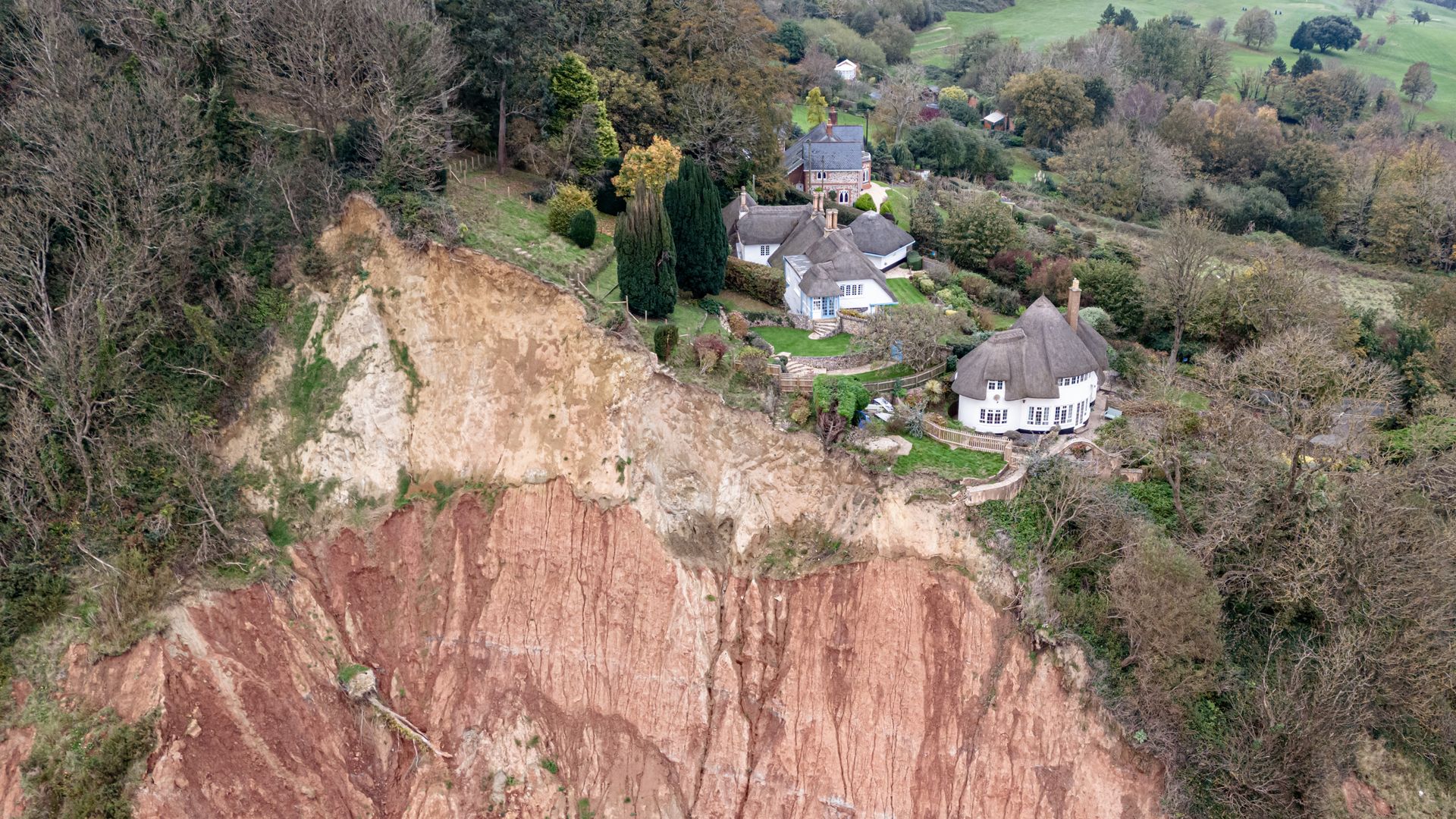
TALLAHASSEE, Fla. (AP) — Powerful storms left thousands without electricity Friday in Florida and other Southeastern states, where damaging winds toppled trees onto homes and power lines following days of deadly severe weather that produced tornadoes in Michigan, Tennessee and other states.
The National Weather Service said wind gusts of 71 mph (114 kph), just shy of hurricane force, were recorded in Tallahassee, where images posted on social media showed mangled metal and other debris from damaged buildings littering parts of Florida’s capital city. The storm knocked two chimneys from apartment buildings at one Florida complex, where fallen trees covered a row of cars.
Other damage included bent and twisted fencing at the baseball stadium of Florida State University, where classes were canceled Friday.
Florida Gov. Ron DeSantis said on the X social media platform Friday that the state Division of Emergency Management was working with local officials to “do everything possible to return life to normalcy for our residents as quickly as possible.”
A statement from the city of Tallahassee blamed “possible tornadic activity” for the widespread damage in the city of 200,000 people. There were no immediate reports of injuries. The city said more than 66,000 customers were without electricity and 11 substations suffered damage.
“Restoration will possibly take through the weekend,” the announcement said.
Strong thunderstorms also were expected in Alabama near the Florida panhandle, where gusty winds could knock down tree limbs, the weather service said.
Nearly 280,000 homes and businesses from Mississippi to North Carolina were blacked out late Friday morning, according to the tracking website poweroutage.us. Most of those outages were in Florida, where lights and air conditioning were out for more than 180,000 customers.
In Mississippi’s capital city of Jackson, authorities on Friday were asking residents to conserve and boil water as a precaution after a power outage at one of its major water treatment plants. JXN Water, the local water utility, said customers could expect reduced water pressure as workers assessed damage from overnight storms.
“It will take many hours for the system to recover and some places may take longer,” Ted Henifin, the water system’s manager, said in a statement.
Several tornado warnings and watches were issued by the National Weather Service on Friday morning, but were lifted by midday as the threat shifted to damaging high winds.
Other parts of the South were cleaning up from storm damage inflicted earlier in the week. In the rural farming community of Vidalia, Georgia, and surrounding Toombs County, officials said a tornado left a path of destruction roughly 2 miles (3.2 kilometers) long Thursday afternoon.
About 10 houses had trees crash onto or through their roofs and crews worked through the night to remove about 50 downed trees that were blocking roads, said Lynn Moore, emergency management director for Toombs County. Winds tore part of the roof from one Vidalia business and lofted it across a road, where the debris smashed into a brick wall and fell onto an unoccupied SUV, Moore said.
A dozen car wrecks were reported as the storm passed, Moore said, but nobody in the county was reported injured.
“We’re fortunate that it wasn’t stronger than it was,” Moore said.
Also Thursday, the weather service reported a hurricane-force wind gust of 76 miles per hour (122 kph) in Autauga County, Alabama. And one person was injured in Rankin County, Mississippi, after a tree fell crashing onto a home, according to weather service damage reports.
Since Monday, 39 states have been under threat of severe weather and at least four people have died. On Wednesday and Thursday, about 220 million people were under some sort of severe weather risk, said Matthew Elliott, a Storm Prediction Center forecaster.
The weather comes on the heels of a stormy April in which the U.S. had 300 confirmed tornadoes, the second-most on record for the month and the most since 2011. Both the Plains and Midwest have been hammered by tornadoes this spring.
A storm was blamed for killing a 22-year-old man in a car in Claiborne County, north of Knoxville, officials said. A second person was killed south of Nashville in Columbia, the seat of Maury County, where officials said a tornado with 140 mph (225 kph) winds damaged or destroyed more than 100 homes.
Tennessee Gov. Bill Lee said the woman who died in Maury County was in a mobile home that was thrown several feet into a wooded area. Lee visited emergency managers and Tennessee Department of Transportation officials in the storm-stricken area Thursday.
Torrential rains led to a flash flood emergency and water rescues northeast of Nashville, and the weather service issued a tornado emergency, its highest alert level, for nearby areas.
A 10-year-old boy was seriously injured in Christiana, southeast of Nashville, when he got caught in a storm drain and swept under streets while playing with other children as adults cleared debris, his father, Rutherford County Schools Superintendent Jimmy Sullivan, posted on social media.
The boy, Asher, emerged in a drainage ditch and survived after being given CPR, “but the damage is substantial,” Sullivan posted on Facebook, asking for prayers.
“Asher needs a miracle,” Sullivan wrote.
Dozens of people gathered at the school district’s offices for a prayer vigil Thursday. They bowed their heads and closed their eyes in prayer, and they sang “Amazing Grace” together.
___
The Associated Press’ climate and environmental coverage receives financial support from multiple private foundations. AP is solely responsible for all content. Find AP’s standards for working with philanthropies, a list of supporters and funded coverage areas at AP.org.








